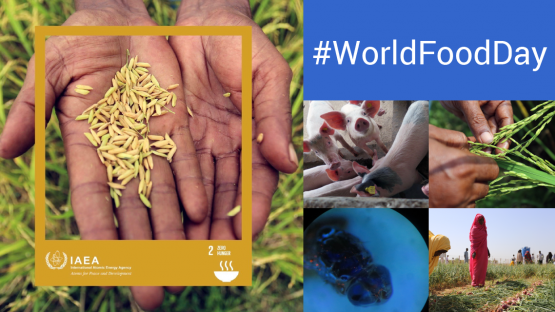While higher yielding crops may mean more food, that food needs to be kept safe at each step of the way to ensure it stays accessible and affordable. In countries like Argentina, the nuclear-based sterile insect technique (SIT) has been used to successfully control a devastating fruit fly pest that destroys stone fruits such as peaches and plums. Scientists in Morocco have been using SIT in an ongoing campaign to suppress the Mediterranean fruit fly and are now expanding its use to protect the entire country’s citrus production, particularly in the Agadir region.
Using the same technique, Latin American countries have started working with the IAEA and its partners to prevent the re-introduction of the New World screwworm into Central and North America, which affects livestock production and threatens human health. In Senegal, suppression of blood-sucking tsetse flies using SIT has helped to reinvigorate livestock reproduction and boost milk and meat yields.
While SIT can help prevent pests from damaging crops and the health of livestock, food irradiation can also be used to prevent insects from spreading through exports. Irradiation is also being used to minimize the risk of food-borne illness and to keep food fresher longer. Cuba has recently revived its food irradiation services to protect its fruit supply and help boost food security.
To help ensure food safety, countries like Costa Rica are using nuclear techniques to analyse samples of food like beef and pork to detect contaminants, such as pesticides, heavy metals, and veterinary drug residues. This has helped guarantee that their food products are safe to eat and meet market standards to stay competitive.





